What is a Combo product?
You’ve probably visited a fried chicken shop and seen a Combo on the menu like “Summer Fun,” which includes two pieces of chicken, a portion of pasta, and two drinks for only 89,000 VND instead of 127,000 VND if bought separately; or gone to a clothing store and noticed a “Back-to-School” set of a shirt and pants priced at only 70% of buying each item individually. For any consumer, selling products as a combo—bundling multiple items together at a discounted price—is always an effective sales strategy for both buyers and sellers.
The practical needs of businesses using MISA AMIS
For customers, combos help save time choosing products, especially with discounted prices and a more convenient, diverse shopping experience. For sellers, selling products as a combo increases revenue and profit by encouraging customers to buy more items, optimizes packaging and shipping costs, and serves as a factor to attract new customers.
As a retailer, besides creating combo strategies to boost sales, managing combo products within an enterprise software system and synchronizing them with an accounting system like MISA AMIS is also a trend that many business owners are interested in. This article will help you—who manage the MISA AMIS system in your business—understand the workflow for managing Combo products and MISA AMIS’s integration capabilities with other systems via API when using the HexaSync Automation Engine platform.
How to Declare and Create Combo Products in MISA AMIS
Initial Configuration
Before declaring Combo products, you need to enable this feature in MISA AMIS as follows.
On the MISA AMIS homepage, go to Settings > Setup > Options > General Options, then under Sales, enable “Generate Sales Transactions for Combo Products”.

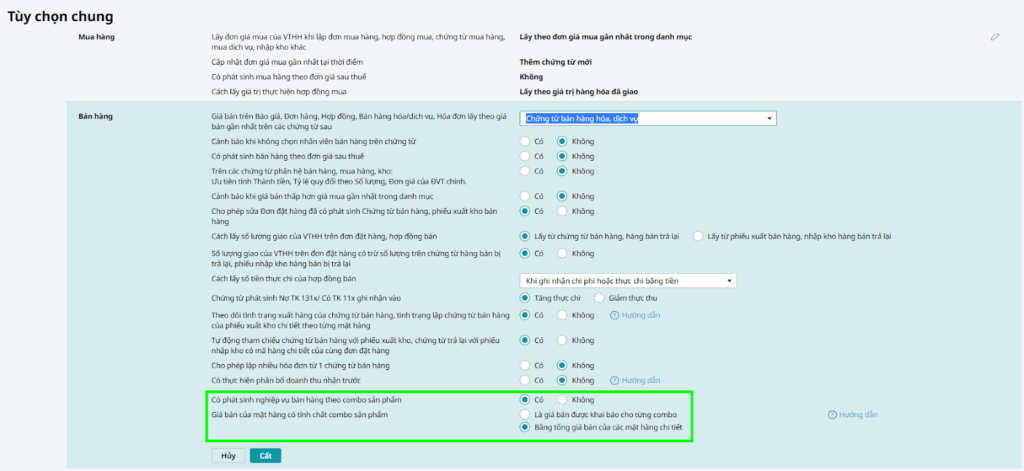
Selecting the Combo Pricing Method
When configuring, you must choose one of the two combo pricing methods: a Fixed Price for the entire combo or a Combo Price based on the sum of the individual products.
Type 1 – Fixed Price for the Entire Combo
- The combo price is set as a fixed amount, independent of the prices of the individual items.
- When issuing an invoice, the sales list only shows the combo as a single product and does not display the details of the component items.
- This method is more commonly used by businesses and is suitable for offering a discounted price for the combo compared to purchasing the items separately.
Type 2 – Combo Price Based on the Sum of Component Products
- The combo price is automatically calculated as the total selling price of all component products.
- When creating a sales document, the default price is the sum of the prices of the products in the combo.
- When issuing an invoice, the invoice will display the details of each item in the combo.
- This pricing method is suitable for combos that prioritize convenience and quick purchasing for customers rather than offering a discounted price. chỉ ưu tiên trải nghiệm tiện lợi, mua hàng nhanh cho khách hàng thay vì đánh vào yếu tố ưu đãi về giá
Note that MISA AMIS only allows you to use one of the two pricing methods. If you choose Method 1 and later switch to Method 2, previously declared combo products will no longer follow the original method.
How to Create Combo Products in MISA AMIS
From the MISA AMIS homepage → select Categories > Materials & Goods.

In the Materials & Goods Category, select Add → set the Goods/Service Type as Combo Product.

Finally, declare the Combo information and add the component products, as well as the combo selling price (if the Combo is set up using the Fixed Price method).

How to Create and Manage Combo Products on an eCommerce Website
In the online sales environment, popular eCommerce platforms like Shopify, Sapo, Magento, etc., all support creating and selling Combo products (also called Bundles) through built-in features or apps.
To understand how a combo product can be synchronized between MISA AMIS and an eCommerce website, businesses also need to clearly understand how combo products work on the website and the integration capabilities of the eCommerce platform being used. Specifically, in this article, we will refer to an example of creating and managing combo products on Shopify.
Shopify Apps Supporting Combo Product Creation
Shopify App Store provide numerous apps that help businesses easily create and manage combos/bundles on their store.
Overall, most Shopify apps support creating combo products with the following features:
- The combo is displayed as an independent product with its own price on the website.
- Customers can clearly see the component products within the combo when making a purchase.
- The store can set a discounted price for the combo or a price equal to the sum of the individual products.
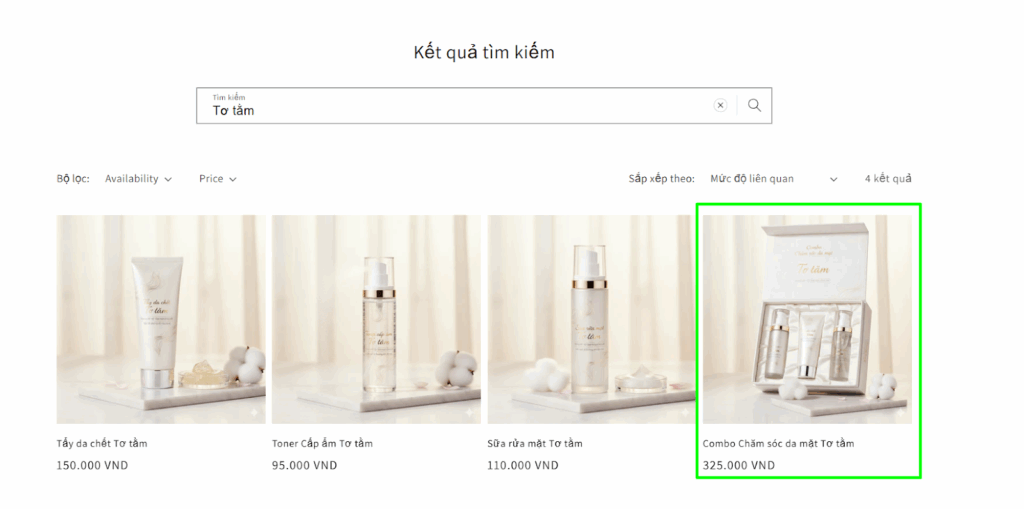
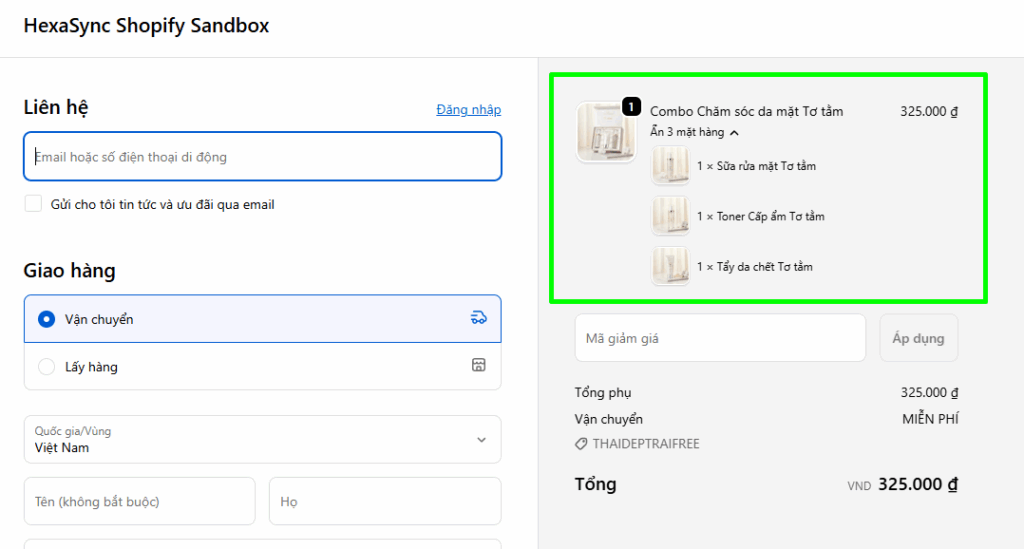
How to Create Combo Products on Shopify
Depending on their needs and budget, sellers can choose a free or paid app that suits their requirements. This article uses the Shopify Bundles app, provided for free by Shopify, to illustrate how to create and manage combo products on a Shopify website specifically, and on eCommerce websites in general.
After installing the app, simply follow these steps: Create Bundles → Select Products → Enter Combo product information (Name, Description, Price, SKU, and other details) → Save and Publish. Your store will then have a combo product ready for sale.
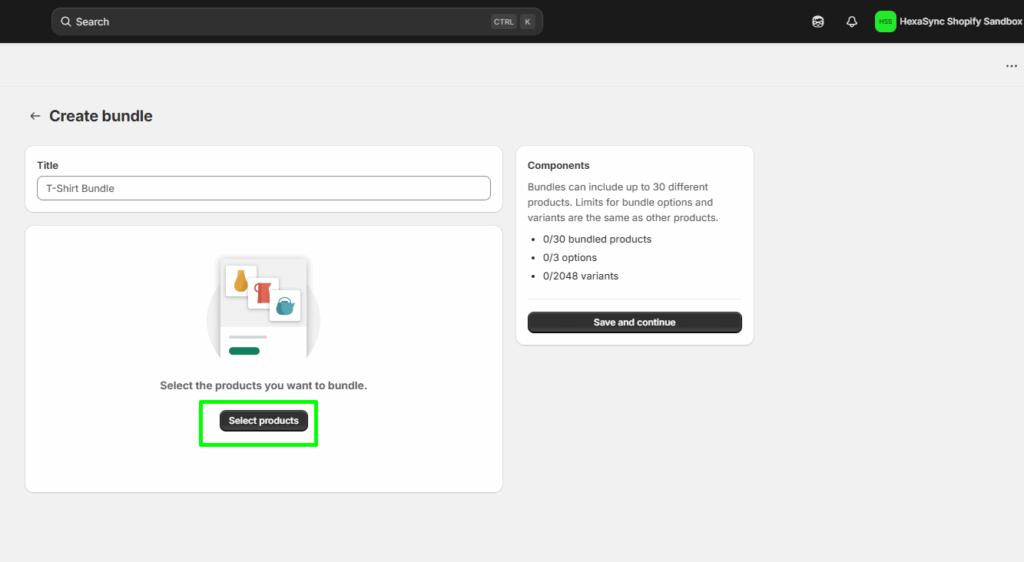

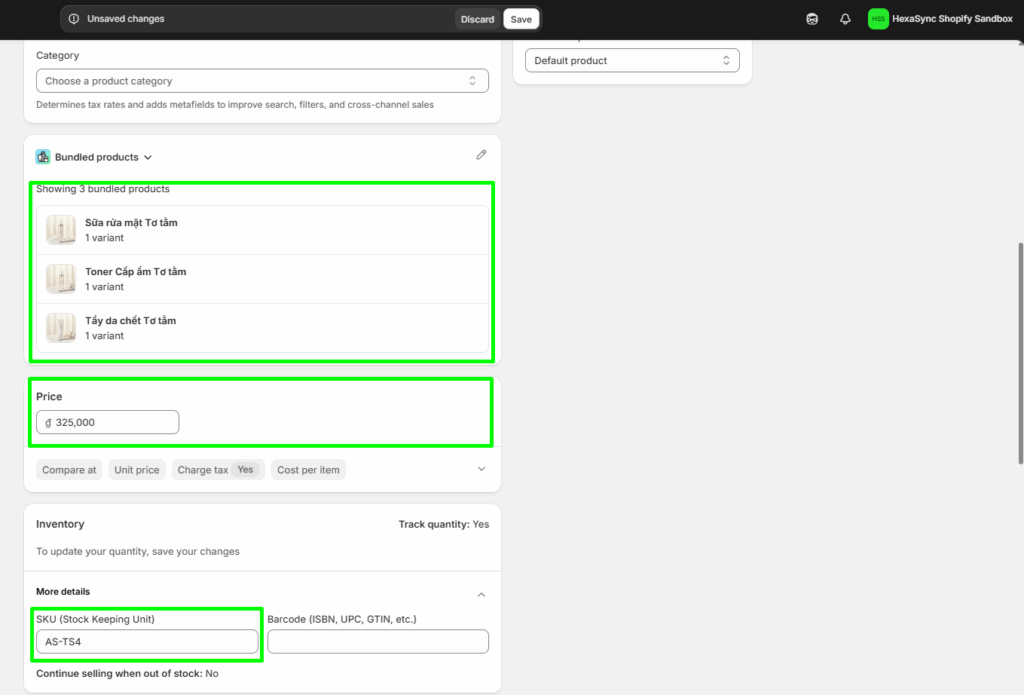
Next, you need to monitor the sales of the newly created Combo product in your store to process orders promptly, as well as continuously update inventory to prevent overselling.
Why Is It Necessary to Synchronize Combo Products Between MISA AMIS and an eCommerce Website?
Creating a combo product is a one-time task for each product, which may lead sellers to think that synchronizing combo products is unnecessary. However, when sales volumes increase, requiring fast order processing and continuous product and inventory updates, manual management can overwhelm a business, causing disruptions in the sales process and negatively impacting the customer shopping experience.
In the era where automation is a priority for every business, synchronizing combo products between MISA AMIS and eCommerce websites (such as Shopify, Sapo, Magento, etc.) is essential to ensure efficient, accurate, and automated business operations.
- Ensuring Data Consistency
- When selling combos on a website, product information must be accurately reflected in MISA AMIS to support inventory management, revenue recording, and transparent financial reporting.
- Automating Business Processes
- Without automatic synchronization, managing combo products becomes time-consuming, requiring manual entry of each item in every order, which increases the risk of errors (wrong items, incorrect discount calculations), delays in invoicing, and order processing.
- Optimizing Business Efficiency
- With accurate and automatically synchronized data, business owners can easily monitor combo sales performance to adjust strategies quickly—especially during major promotions or flash sales—and easily compare profits between selling individually or as a combo to optimize pricing.
MISA AMIS’s Capability to Synchronize Combo Products
Currently, MISA AMIS provides APIs to retrieve combo product information and create sales documents containing combo products (see article a Đánh Giá MISA AMIS API – 2025: Toàn Diện Từ Góc Nhìn Kỹ Thuật Tích Hợp for reference).
Although there is no API to create combo products directly in the MISA AMIS system, using the information provided by the APIs, combo products can be synchronized between MISA AMIS and other systems via the inventory_item_code already generated in AMIS.
HexaSync – An Effective Solution for Synchronizing Combo Products Between MISA AMIS and eCommerce Websites
Managing and synchronizing combo products between MISA AMIS and an eCommerce website is not a simple task due to limitations in business processes and APIs. However, with HexaSync’s flexible synchronization design and a consulting team experienced in integrating MISA AMIS with other systems, updating combo product information or processing orders containing combos can be easily automated while still meeting the business requirements on each platform.
Automatically Update Prices and Inventory
After creating a combo product on both the eCommerce website and MISA AMIS with the same SKU, HexaSync automatically synchronizes the selling price and inventory from MISA AMIS to the eCommerce system based on SKU and warehouse mapping. Using a mechanism that retrieves the most recently updated data, HexaSync ensures that product prices and inventory are updated almost in real time.

When the selling price of the combo with SKU AS-TS4 is updated to 350,000 VND, HexaSync’s price synchronization task records the change and updates the selling price on the eCommerce website (Shopify) to the new corresponding price.

Synchronizing Orders Containing Combo Products
When an order is placed on the eCommerce website, depending on the design of the combo app and the eCommerce platform, the price of each product within the combo may be displayed differently in the order.
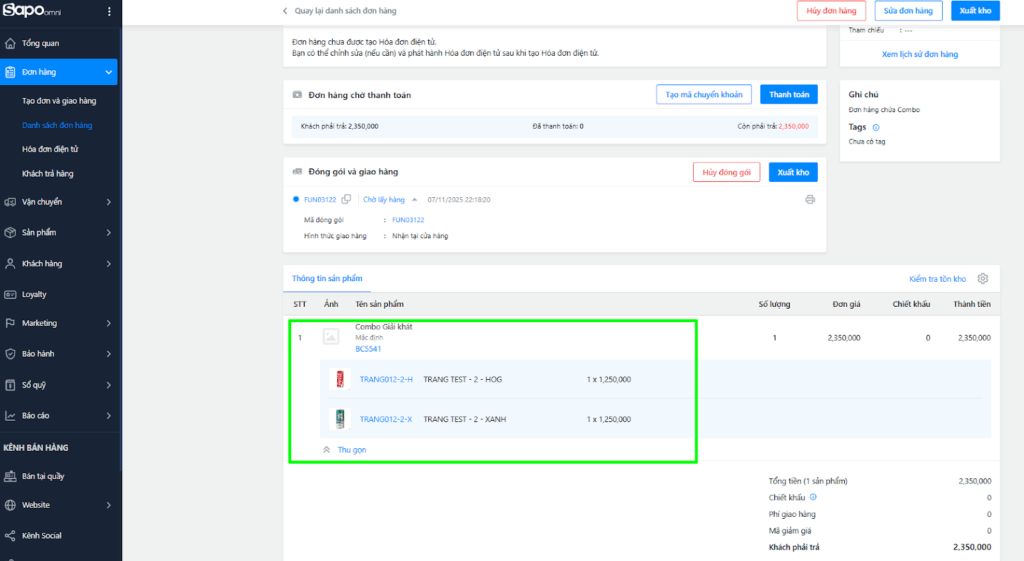

Regardless of how the order is displayed, HexaSync can synchronize orders containing combo products accurately according to the information shown on the eCommerce website, or adjust Amis orders based on the business’s preferences.
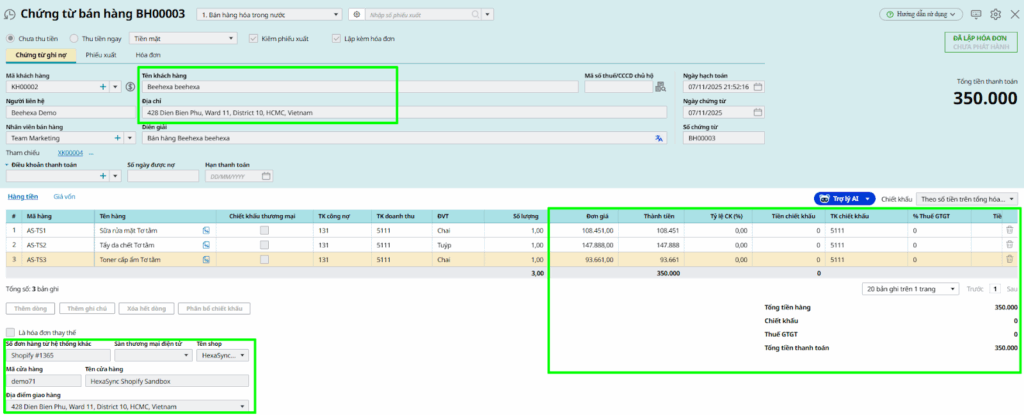
In addition to product information, customer details, shipping addresses, order sources and referral codes, payment methods, and more are also included in HexaSync’s order synchronization configuration.
Conclusion
Through successfully validated integration projects (Case Study: Nhà Sách Sao Mai: Giảm 60% chi phí vận hành nhờ tự động hoá quy trình với tích hợp Sapo Omni và MISA Amis qua HexaSync), you can confidently choose HexaSync to automate not only the sales processes for combo products but also overall sales workflows, customer information synchronization, and inventory management—without worrying about the technical limitations of APIs.
By choosing HexaSync, you can:
- Automate the synchronization of products, combos, orders, customers, and inventory with MISA Amis.
- Overcome the technical limitations of the MISA Amis API with a versatile integration solution.
- Ensure data accuracy and consistency between MISA Amis and third-party systems.
- Save time and resources for your sales and operations teams.
To learn about the cost of integrating MISA Amis using HexaSync, you can refer to the HexaSync Software Service Pricing Table for MISA Amis and eCommerce integration, or contact HexaSync at sales@beehexa.com to discuss your business’s specific integration needs in more detail.

